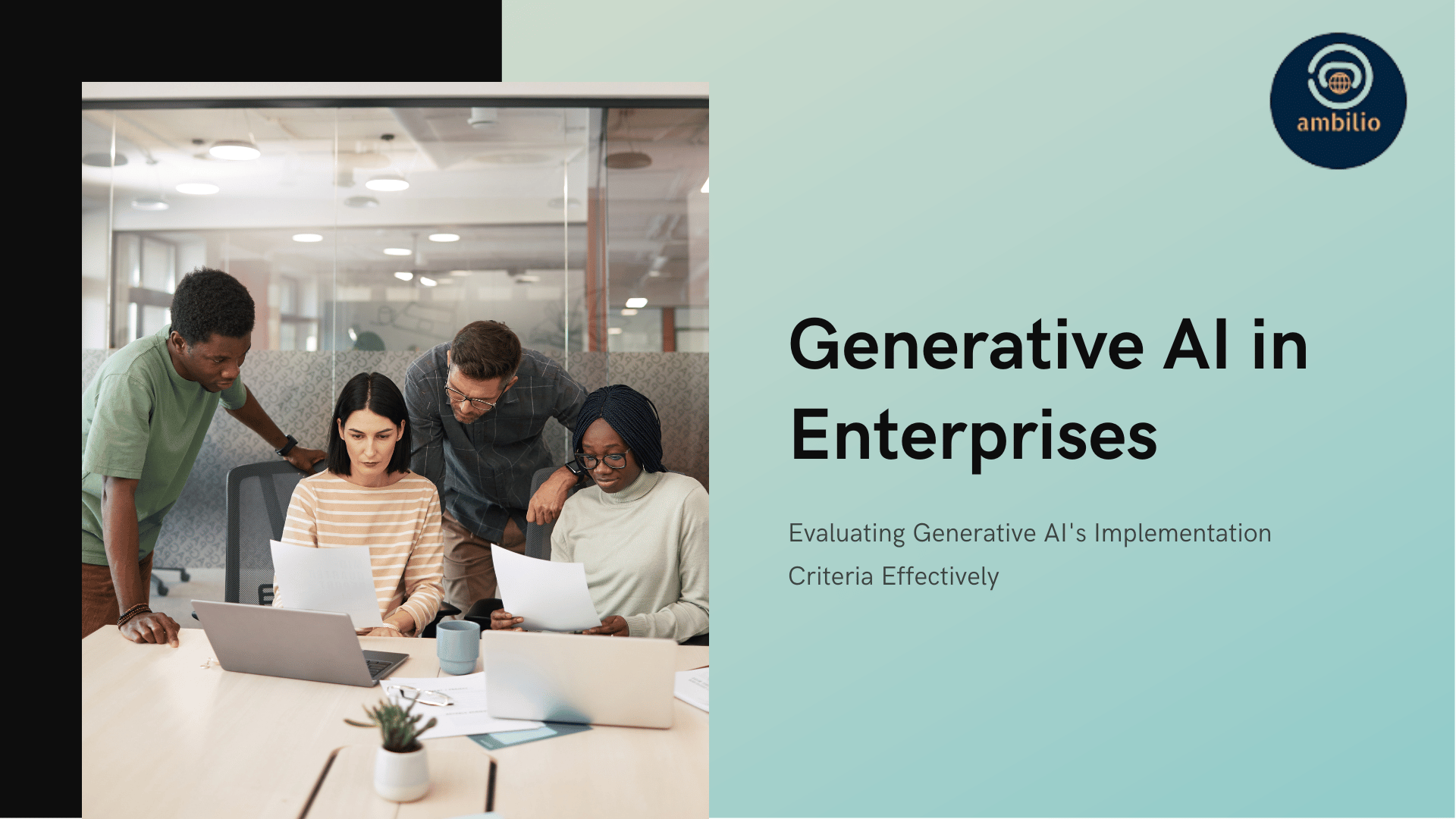Enterprises worldwide are increasingly harnessing the power of generative AI to drive innovation, enhance customer experiences, and streamline operations. However, implementing such advanced AI systems demands a thorough understanding of the parameters that influence the choice of the language model and infrastructure. This comprehensive guide delves into the crucial considerations for enterprises venturing into the realm of generative AI, spanning from model evaluation to infrastructure necessities.
Model Evaluation Parameters
Before delving into the intricate details of selecting the right model for enterprise needs, understanding key performance indicators is crucial. Evaluating these parameters ensures an informed decision aligning with the enterprise’s goals.
- Performance: The cornerstone of any generative AI model lies in its performance metrics. Enterprises must scrutinize the model’s language understanding, coherence in generating content, and its efficacy in fulfilling specific business tasks. Robust performance directly correlates with the model’s utility in addressing enterprise needs.
- Scalability: The ability of the model to scale efficiently is paramount. It encompasses handling increased workloads, concurrent users, and batch processing. Scalability ensures seamless operations in the face of expanding demands within an enterprise environment.
- Resource Requirements: Understanding the computational resources required for training and inference is crucial. Whether it’s CPU, GPU, or specialized hardware like TPUs, aligning the model’s needs with available resources is pivotal for optimal performance.
- Latency and Throughput: Real-time applications demand low latency and high throughput. Evaluating the model’s response time and throughput capabilities becomes imperative, ensuring compatibility with the enterprise’s latency constraints.
- Model Size and Complexity: Balancing model size and complexity against performance is essential. While larger models often offer superior performance, they might necessitate higher computational power, posing a trade-off.
- Data Privacy and Security: Enterprises must ensure that the chosen model and infrastructure align with data privacy and security standards, especially when handling sensitive information.
- Integration: Seamless integration with existing enterprise systems and workflows is critical for the successful adoption of generative AI within an enterprise ecosystem.
- Cost: Consideration of the total cost of ownership involves infrastructure costs, licensing fees, maintenance, and ongoing operational expenses, ensuring alignment with the enterprise budget.
Infrastructure Considerations
Infrastructure forms the backbone of a robust generative AI system. Addressing various infrastructure elements is essential to create an environment that supports the selected model’s requirements and the enterprise’s operational demands.
- Compute Resources: Determining the type and quantity of computational resources needed is foundational. Whether it’s CPUs, GPUs, TPUs, or cloud-based services, selecting the right computational power is crucial.
- Storage: Adequate storage provisions for training data, model checkpoints, and related data are essential. Scalable storage solutions ensure efficient data retrieval and management.
- Networking: Reliable and high-speed networking is indispensable, especially for distributed systems or cloud-based solutions.
- Deployment Environment: Choosing between on-premises, cloud-based, or hybrid solutions depends on data sensitivity, compliance requirements, and scalability needs.
- Monitoring and Management: Implementing robust tools and processes for monitoring model performance, resource management, updates, and system health is vital for sustained operations.
- Resilience and Redundancy: Building redundancy and failover mechanisms guarantee high availability and minimize downtime, enhancing system reliability.
- Security Measures: Robust security protocols safeguard the infrastructure, data, and models from potential threats or breaches, ensuring enterprise-grade protection.
Conclusion
The journey towards implementing generative AI within an enterprise demands a meticulous assessment of both model and infrastructure considerations. By meticulously evaluating these parameters and aligning them with the enterprise‘s specific needs, organizations can pave the way for successful integration of generative AI, unlocking new possibilities for innovation and efficiency.



